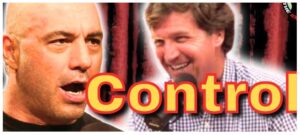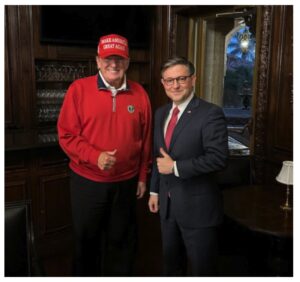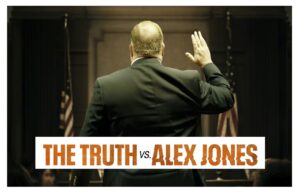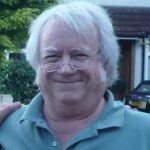by James Norwood (with Jim Fetzer)
 In 1995, John R. Tunheim was nominated by President Clinton and confirmed by the United States Senate as a federal judge for the District of Minnesota.
In 1995, John R. Tunheim was nominated by President Clinton and confirmed by the United States Senate as a federal judge for the District of Minnesota.
In the late 1990s, he served as chair of the Assassination Records Review Board (ARRB), which oversaw the declassification of government documents related to the assassination of President John F. Kennedy.
This unprecedented act was due to Oliver Stone’s “JFK” (1991), wherein at the end of the film, the public was informed that documents from the most recent government investigation (the House Select Committee on Assassinations) had been sealed until the year 2029.
On 2 May 2013, Judge Tunheim spoke on the JFK assassination to the Lions and Rotary International Clubs in Stillwater, Minnesota. Over a decade has now passed since the ARRB completed its mission. Tunheim underscored the success of the ARRB in releasing six million pages of records pertaining to the assassination. However, he did not mention that those records are not easily accessible to American citizens. There is no internet site in which the ARRB documents may be read online, and one must make a special trip to the National Archives on Pennsylvania Avenue in Washington, D.C., to sift through the records without the benefit of a carefully prepared index.
Judge Tunheim underscored that the purpose the ARRB was not to interpret the documents or provide an investigation like the Warren Commission or the House Select Committee. At the same time, he has chosen not to offer his own observations about the implications of the unsealed files. In fact, the refrain of Tunheim for over a decade has been that of silence on the actual content of the newly-released documents.
Speaking in Minneapolis (1999)
As a federal judge with extraordinary freedoms and powers, shouldn’t Tunheim have an obligation to explain what his committee learned about a major turning point in our history? But, as he indicated in Stillwater, the committee’s goal was merely
“to open records to the public and let them decide for themselves what happened in the days after the assassination.” [1] In 1999, I recall vividly a keynote address Judge Tunheim delivered at Professor James H. Fetzer’s conference on
“The Death of JFK” in Minneapolis. In the most pedestrian manner imaginable, Tunheim reiterated how the ARRB’s goal was to gather the documents, not evaluate them.

- The discovery that Gerald R. Ford (R-MI) had changed the description of a back wound to a neck wound to support the Warren Commission’s “magic bullet” theory appears to be a “smoking gun” from the ARRB. It actually hit JFK 5.5″ below the collar, thereby rendering the Commission’s conclusion of “a lone assassin” indefensible.
He also offered the platitude that the committee discovered no “smoking gun” from the enormous repository of information. Surely out of six million documents, there was something new that Tunheim could have identified in his speech. But he offered no clues as to what the ARRB collection might tell us. As the first speaker at the 1999 conference, Tunheim arrived at the hotel forty-five minutes late, completely throwing off the evening’s agenda. His tardiness made it convenient for him (in the interest of time) to avoid fielding many questions from conference participants who had studied the JFK assassination for decades.
Speaking in Grand Forks (2008)
During
a national conference, “John F. Kennedy: History, Memory, and Legacy”, held at the University of North Dakota 25-27 September 2008, Judge Tunheim gave
a keynote address along with Theodore Sorenson, who had been JFK’s principal speechwriter. His presentation was consistent with his position in Stillwater, where he maintained that the ARRB had no investigative function and that it had discovered no “smoking guns”. Even more interesting, therefore, is that he introduced
Professor Fetzer, who outlined evidence for conspiracy and cover-up in the assassination of JFK.

Fetzer explained that Oswald had passed his nitrate test, that the backyard photos were faked, that witnesses had seen him in and around the lunchroom before and after the shooting, that the wound to the throat was a wound of entry, that the windshield bullet hole could be seen in the Altgens’ photograph, that the “magic bullet” theory was untenable and actually anatomically impossible, that there had been a fist-sized blow-out at the back of that head, that the X-rays had been altered, that the Zapruder film had been revised, that there had been shooters at six different locations and much more.
Since Judge Tunheim was in attendance for the entire presentation, he is familiar with the evidence Professor Fetzer presented–and took copious notes during the lecture. It is more than difficult to believe how anyone who had understood this presentation could persist in the belief that Lee Oswald was the lone assassin, much less that there was no conspiracy or cover up. Take time to review this chapter, which
you can download and study at your leisure. If Judge Tunheim finds fault with any of Fetzer’s arguments, it would be valuable to discover which they are and why.
Speaking in Sillwater (2013)
For his more recent talk in Stillwater, Tunheim has slightly modified his position, and is now offering more of a personal interpretation of the assassination. But, astonishingly, his perspective seems nothing more than restating the original findings of
The Warren Report! For example, Tunheim suggests that, despite new evidence available to the ARRB, Lee Harvey Oswald was a genuine defector and malcontent, apparently driven to killing the president to etch his name in history:
“His [Oswald’s] motivation is, I think he thought he was supposed to be someone famous in his own mind, and if he did this he would be viewed with great glory in the Soviet Union and Cuba. He was a really mixed-up 24-year-old who was on a parade route that had changed to go near his workplace.” [2]

- The ARRB also discovered that Lee had told Homicide Detective Will Fritz that he was “out with Bill Shelley in front” during the shooting, which new research on the Altgens photograph has confirmed. (See, for example, recent studies at “The Oswald Innocence Campaign”.)
So, all that Tunheim is capable of concluding about Oswald is that he was a “mixed-up 24-year old”? If we compare Tunheim’s statement to
The Warren Report’s summary of Oswald, it is a virtual paraphrase of the vague and insubstantial conclusions of the Commission, as well as those of the pseudo-biography of Oswald entitled
Portrait of the Assassin later published by commissioner Gerald R. Ford:
“Oswald was moved by an overriding hostility to his environment. He does not appear to have been able to establish meaningful relationships with other people. He was perpetually discontented with the world around him. Long before the assassination he expressed his hatred for American society and acted in protest against it. Oswald’s search for what he conceived to be the perfect society was doomed from the start. He sought for himself a place in history—a role as the ‘great man’ who would be recognized as having been in advance of his times.” [3]
The Soviet Analysis of JFK
One of the documents unearthed by Tuheim’s ARRB was a top secret memo prepared by Director J. Edgar Hoover and other FBI officials. The memo summarized the findings of the assassination based on an analysis in the Soviet Union conducted by the KGB. The memo conveyed what the Soviet newspapers, including Pravda and Izvestia, were informing the people in the USSR. According to the FBI memo, “the KGB was in possession of data purporting to indicate that President Johnson was responsible for the assassination of the late President John F. Kennedy.” [4]
With its unparalleled information-gathering capacity, the KGB had come to the conclusion that Johnson had played a key role in the assassination, and Hoover was eager to share this information with Johnson personally. It was obvious from the memo that Soviet officials never believed Oswald was responsible for the assassination. Tunheim studiously avoids mentioning this remarkable document.

- Given his prominence as a GOP political strategist, Roger Stone’s new book may open the public’s mind to Lyndon’s involvement in the assassination and inspire many to read those by Madeleine Duncan Brown, Billy Sol Estes, Barr McClellan, and especially Phil Nelson, not to mention the “Last Confessions” of E. Howard Hunt and Jack Ruby’s observations on the pivotal role of LBJ. This is not news for serious students of JFK.
Tunheim seems to force upon the public the theme that “we’ll never know the truth” about the assassination of JFK. But it is also revealing about what the ARRB was unable to uncover or release to the public. For example, Tunheim informed the Stillwater audience that “what we didn’t declassify at the time were documents related to protection of the President.” [5] But he did not disclose that those documents were unavailable because the Secret Service had destroyed the records of the president’s travel activities in the crucial period of fall 1963. The abysmal failure to protect the president in Dallas is of concern.
The Chicago Attempt on JFK
But of perhaps even greater significance is the destruction of documents about the president’s planned trip to Chicago in early November, which was canceled due to an assassination threat. The attempt to kill the president in Chicago was nearly identical to the final scenario presented to the public about the killing of JFK in Dallas. Due especially to the revelations of SS Agent Abraham Bolden, we know that before the president left for Chicago, the authorities had disrupted a plan to shoot JFK from a high rise building, as his motorcade arrived from the airport and passed through downtown Chicago.
 Hear the interview on “The Real Deal” with Abraham Bolden here at this link
Hear the interview on “The Real Deal” with Abraham Bolden here at this linkAs part of the plan, a scapegoat named Thomas Arthur Vallee had virtually the same profile as Lee Harvey Oswald—a disaffected loner with a military background. Tunheim apparently has not made any connection between Chicago and Dallas and how inconvenient it would have been to have documentation linking to the two events in nearly every conceivable detail. Why didn’t he and the ARRB take the Secret Service to task about the willful destruction of vital evidence? Why didn’t he offer a complete version of the lost Secret Service records to his audience in Stillwater?
During his speech on May 2nd, Tunheim apparently wanted the listeners to understand that “the FBI was not involved in the investigation because at the time, shooting the president was not a federal crime.” [6] Tunheim is surely aware that the FBI controlled the entire investigation from start to finish. The establishment of the Warren Commission effectively closed off alternative investigations in the state of Texas or by Congress. Before the Warren Commission had even convened, the FBI had completed a preliminary report that would serve as the template for The Warren Report.
LBJ speaking with J. Edgar Hoover
On the very day that the new president Lyndon B. Johnson established the Warren Commission — 29 November 1963 — he had a phone conversation with FBI Director J. Edgar Hoover. Hoover underscored that three bullets were fired at the president by a lone shooter. This became the basis for The Warren Report’s conclusions that Lee Harvey Oswald was the “lone nut” assassin, who was able to fire three shots from his Mannlicher-Carnano carbine on the sixth floor of the Texas School Book Depository. The FBI provided its conclusions to the Warren Commission, and when investigative questions arose, it was the FBI that provided the answers to back up its initial findings.

- The ARRB discovered Cmd. James Humes, USNMC, had taken a cranial saw to the skull of JFK and enlarged the wound from its original condition as described by the physicians at Parkland (on the left) to the much larger wound (center), which was contracted by the HSCA to a small entry wound (on the right). If that’s not a “smoking gun”, what would be?
Tunheim’s passive, noncommittal approach to the six million pages of documents may be seen in contrast to the work of ARRB analyst Douglas Horne, who published a 2,000-page personal interpretation of the medical evidence in the JFK assassination. [7] Using documents, x-rays, photographs, and personal interviews conducted by his committee, Horne has demonstrated how much new information we have, thanks to the ARRB. Horne carefully defines the term “smoking gun,” and he identifies and describes in painstaking detail a myriad number of examples of breakthrough discoveries. And those “smoking guns” are primarily in the area of the medical evidence of the case!
Responsibility and Democracy
The difference between John Tunheim and Douglas Horne touches on the very nature of personal responsibility in a democracy. The authors of the United States Constitution took great pains in establishing the judiciary to limit the powers of the executive and legislative branches. The
Judiciary Act of 1789 carried out the wishes of the framers of the Constitution by investing authority in judges. As a result, there was a structure of checks and balances with judges awarded lifetime appointments to ensure the integrity of the system.
The power of the judiciary was apparent almost immediately from the landmark ruling of “judicial review,” which was established by Supreme Court justice John Marshall in the
Marbury v. Madison case (1803). In 1954, the Supreme Court issued a decision in Brown v. Board of Education that would transform civil rights in America. In the year 2000, the judiciary effectively determined the outcome of a controversial presidential election. The judges who are appointed to the Supreme Court make their way up the ranks though the system of which Judge Tunheim is a part.
As a federal judge, John R. Tunheim has the power and arguably the obligation to inform the American public of the implications of the release of six million documents about the murder of JFK. But to listen to Judge Tunheim is to believe that all of the work of the ARRB amounted to no more than an enormous
blank in the evidentiary trail of the death of President Kennedy. To casually state that the records are available in the National Archives (if one has the time and financial resources to travel to Washington, D.C.), that there was no “smoking gun,” and that we by necessity have to rely on the conclusions of the Warren Report, is in this writer’s opinion, an abdication of patriotic responsibility. Will our republican institutions remain true to the spirit of the Constitution, or will they become closer to what was depicted by George Orwell in
1984 as the totalitarian “Ministry of Truth”?
James Norwood, Ph.D. (University of California, Berkeley) taught humanities and the performing arts at colleges and universities throughout the country until his retirement in 2011. Among forty different courses, he frequently offered a semester course on the JFK assassination.
NOTES
[2] Ibid.
[3] Warren Report summary, 423.
[5] “In the Interest of History,” op. cit.
[6] Ibid.
[7] Horne’s five-volume opus is the only work to offer a systematic appraisal of the findings of the ARRB. See especially the sterling reviews on Amazon from the readers who have taken the time to read and absorb the stunning implications of this monumental work.
Please follow and like us:
views: 1,615
 In 1995, John R. Tunheim was nominated by President Clinton and confirmed by the United States Senate as a federal judge for the District of Minnesota.
In 1995, John R. Tunheim was nominated by President Clinton and confirmed by the United States Senate as a federal judge for the District of Minnesota. 


 Hear the interview on “The Real Deal” with Abraham Bolden here at this link
Hear the interview on “The Real Deal” with Abraham Bolden here at this link








There is a chance you're qualified to receive a $1,000 Amazon Gift Card.